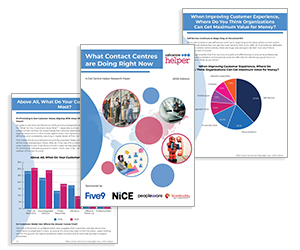As customer expectations shift toward convenience and flexibility, asynchronous chat has emerged as a vital support channel.
Unlike real-time options like phone or live chat, it gives both customers and agents room to respond when it suits them, without sacrificing continuity or quality.
It’s a model that works particularly well across messaging apps like WhatsApp and Facebook Messenger, but it requires rethinking how teams plan, respond, and measure performance.
In this article, we’ll break down how asynchronous chat works, where it fits into your service strategy, and what you need to manage it effectively in 2025.
What Is Asynchronous Chat?
Asynchronous chat is a messaging format that allows customers and service agents to communicate without needing to be present at the same time.
Unlike live chat or phone calls, where both parties interact in real time, asynchronous chat enables pauses between responses, much like a text conversation that unfolds over time.
This flexibility allows customers to engage when it’s convenient for them and allows businesses to manage workloads more dynamically across shifts and teams.
It’s a method of communication that’s rapidly gaining traction across messaging channels like WhatsApp, Facebook Messenger, and even branded in-app chats. Yet managing this form of interaction effectively requires a different approach than traditional real-time support channels.
Example of Asynchronous Chat in Action
Let’s walk through a simple example to illustrate how asynchronous chat plays out in a real customer service scenario:
A customer reaches out via Facebook Messenger:
- “Hey, I ordered a winter coat last week and just realized I selected the wrong size. It hasn’t shipped yet, can I change it?”
An agent replies within 10 minutes:
- “No problem! I can look into that. Can you confirm the order number?”
The customer doesn’t respond until later that evening:
- “It’s #45211.”
By this time, the original agent’s shift has ended. A new agent picks up the thread the next morning, checks the status, and responds:
- “Thanks! We’ve updated the order to size M and confirmed it hasn’t shipped yet. You’ll get a confirmation email shortly.”
This entire exchange spans several hours but feels seamless to the customer. This is the essence of asynchronous chat: timely, convenient, and flexible support that doesn’t demand immediate attention from both sides.
What You Need to Know About Managing Asynchronous Chat
Turnaround Times and Setting SLAs
Traditional channels like voice and live chat come with well-established SLAs. Think 80/20 for voice or “respond within 60 seconds” for chat. But asynchronous messaging operates in a grey area. There’s no “industry gold standard” yet, because customer expectations are more fluid.
That doesn’t mean speed isn’t important, it just means the expectations shift. Most customers expect fast responses to their first message, but they’re generally more forgiving about later delays, especially when those delays are communicated. The key is to establish and communicate realistic response windows.
This is where proactive messaging becomes vital. Automated updates like “We’ve received your message, an agent will respond within 30 minutes” help set the tone.
And if follow-up requires research or coordination, send updates along the way. Customers want to be kept in the loop, not left in the dark.
Understanding and Forecasting Workload
One challenge with asynchronous chat is separating contacts from interactions. A single customer contact, like a request to update an address, can include multiple back-and-forth exchanges throughout the day.
When forecasting staffing needs, you can’t just count the number of new conversations. You also need to model the average number of follow-ups, and when they’re likely to occur.
This requires mapping different use cases (e.g. delivery updates, product issues, returns) and identifying patterns of interaction for each.
Let’s say, for example:
- 1,000 new async chats are initiated per week
- Each generates an average of 3 additional responses
- That’s 4,000 total messages handled weekly, not 1,000
Understanding these patterns is essential for accurate workforce planning. It also helps teams prioritize and triage messages based on urgency and complexity.
Planning for Handle Time and Agent Workflow
Unlike synchronous support, where handle time is typically defined by the duration of a single session, asynchronous interactions are more fragmented.
A quick message might take 2 minutes to reply to. Another might require research, documentation review, or approval from another team.
On top of that, there’s a unique type of hidden handle time: re-entry time. When a new agent picks up an ongoing conversation, they need to catch up.
That means reading the full thread, checking the CRM or ticketing system, and preparing an appropriate response. This re-engagement process can add several minutes, and should be tracked separately.
We suggest thinking of async handle time in three categories:
- Response Time – Writing and sending the actual message
- Wrap-Up Time – Notes, tagging, and CRM updates
- Re-Engagement Time – Reviewing past messages before responding after a delay
Separating these time blocks will give you a more accurate view of team productivity and help uncover where support might be slowing down, especially during handovers.
The Role of AI and Automation in Asynchronous Chat
Asynchronous messaging has evolved beyond just person-to-person text conversations. Today, artificial intelligence plays an increasingly central role in managing the flow and efficiency of these interactions.
AI-powered assistants can:
- Automatically triage and categorize incoming messages
- Provide instant answers to common questions using knowledge base integration
- Gather information before handing off to a human agent (like verifying an order number or confirming identity)
- Provide automated out-of-office messages
This article is a revised version of Planning for Asynchronous Chat in the Contact Centre, originally published by Peopleware.
For articles on live chat messaging, read these articles next:
- 14 Live Chat Best Practices for Better Customer Support
- Live Chat Quality – 7 Training Exercises to Improve It
- Replacing Live Chat With Asynchronous Messaging
Author: Hannah Swankie
Reviewed by: Megan Jones
Published On: 13th Aug 2025 - Last modified: 17th Nov 2025
Read more about - Expert Insights, Live Chat, Peopleware






































